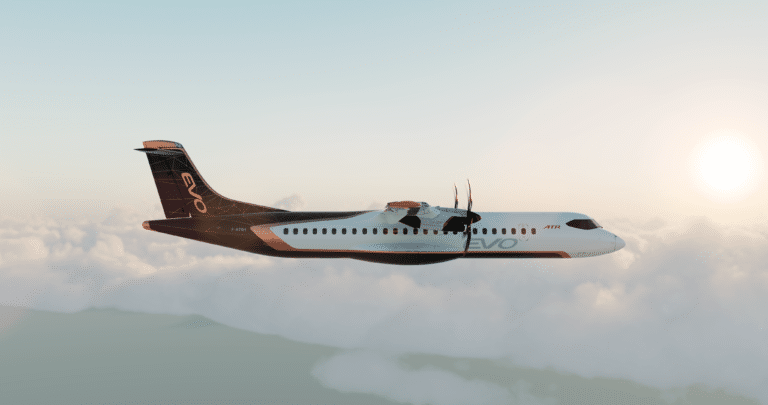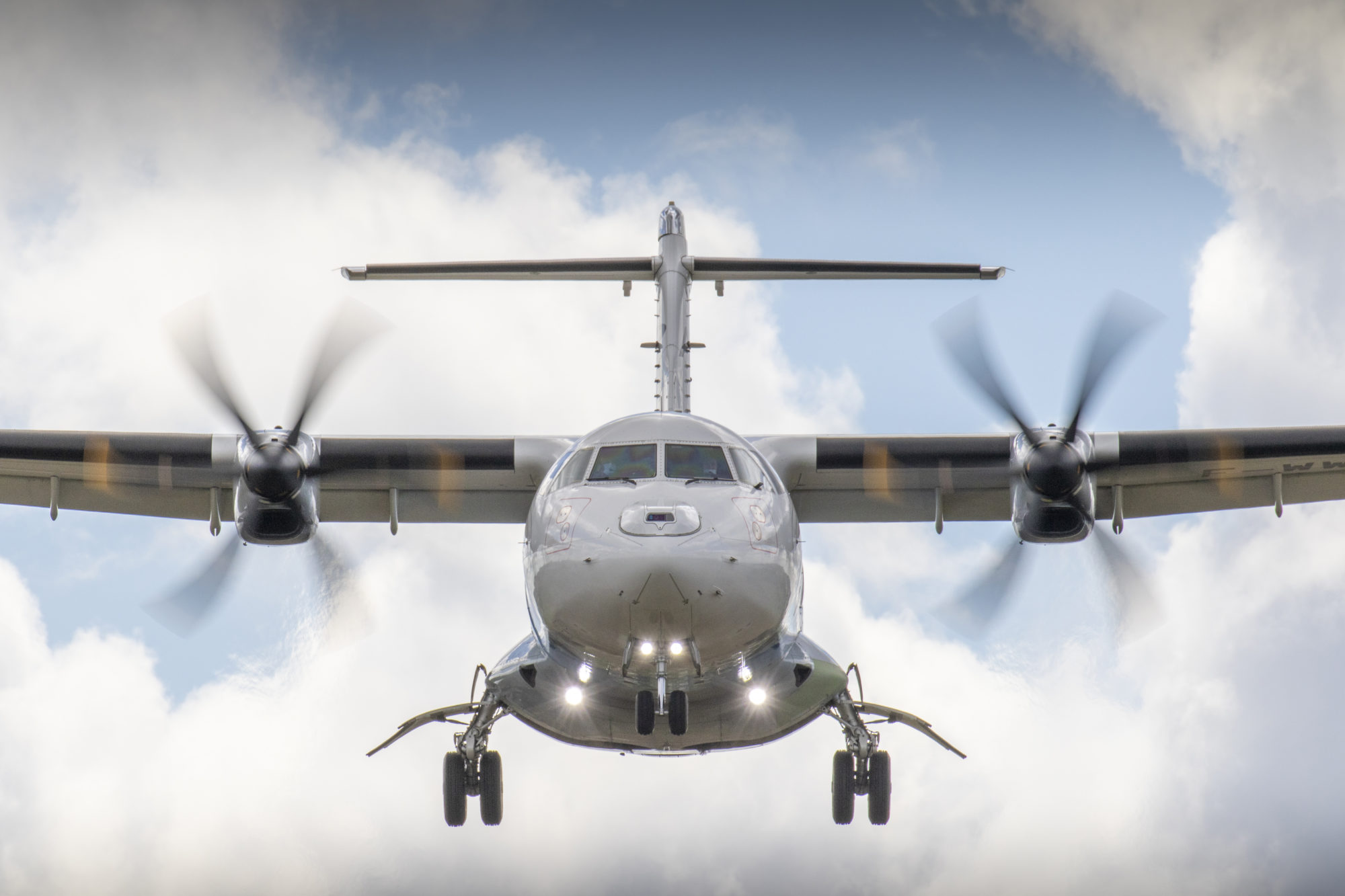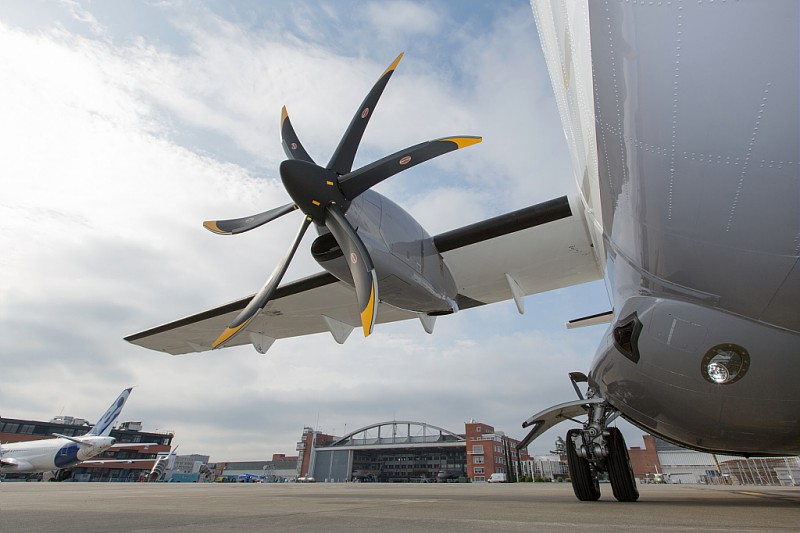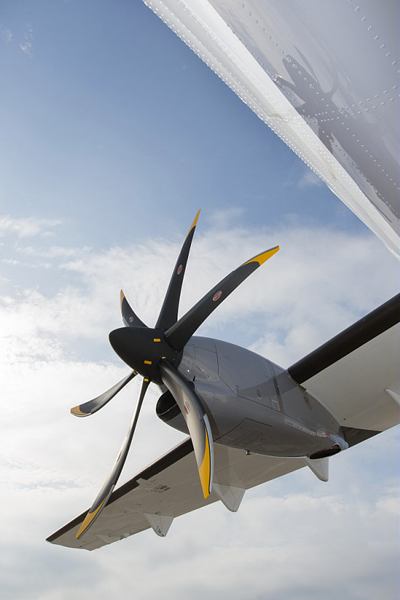The future of aviation: it all revolves around propellers!
After ceding ground to jet engines, propeller-driven systems, which are more energy efficient and eco-responsible, are making a notable comeback in the world of aviation. Propellers are even playing a central role in research projects focused on future flying machines.
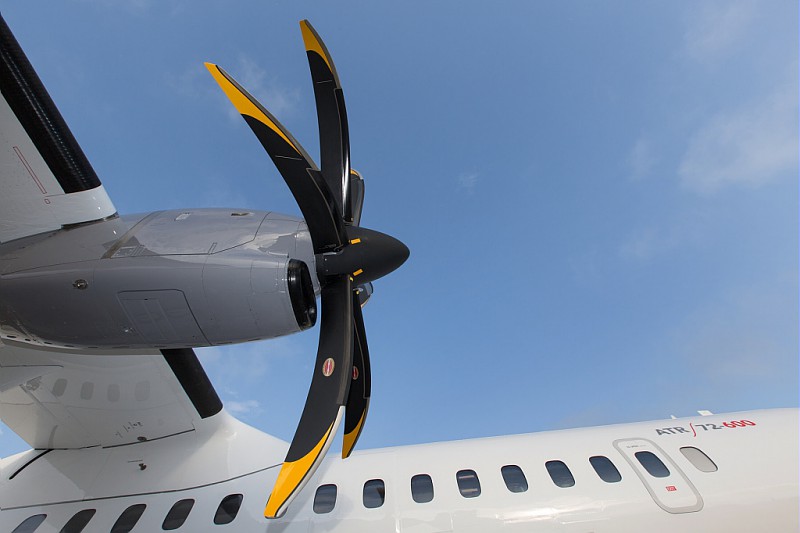
From a technical standpoint, propellers are best in class when it comes to powering a flying machine. Although they are not capable of reaching extremely high speeds, they are more efficient than any other type of propulsion. One of the main parameters taken into consideration is the bypass ratio (BPR), which is a comparison between the quantity of air drawn into the engine for combustion, and the volume of air that goes around the engine core. The higher the ratio, the less fuel is consumed by the aircraft, and the lower its C02 emissions. For the largest jet engines currently on the market, manufacturers aim for a BPR of 15 or 16. By comparison, an ATR, with its uncovered propellers, achieves a ratio of more than 50.
In order to increase the BPR of jet engines, aircraft engineers created a secondary flow around the engine to maximise the mechanical energy produced by combustion of the primary flow (dual-flow jet engine). To maximise this secondary flow and, by extension the BPR, engineers increased the size of the engines and the nacelles that cover them, which in turn increased the overall weight, thereby defeating the object.
The current trend is therefore to reduce or even do away with the nacelle: all development projects under way in the field of electrical propulsion, which aim to reduce fuel consumption and the environmental impact of aircraft, are turning back to open-rotor engines.
The question is not ‘will we be seeing propellers on our aircraft in the future?’ but rather ‘when will they be back?’
Solar Impulse and Open Rotor
In practice, propellers are making a notable comeback in disruptive innovations. We could mention Solar Impulse 2, which in the summer of 2016 enabled Franck Piccard to achieve his ‘crazy dream’ of completing the first ever round-the-world trip on an aircraft powered by propellers and solar energy.
Another flagship project is Open Rotor, led by Safran Aircraft Engines as part of the Clean Sky European research project. Open Rotor uses two counter-rotating, unshrouded fans, thereby cutting fuel consumption and C02 emissions by 30% compared with current engines.
The emergence of hybrid aircraft
“The question is not ‘will we be seeing propellers on our aircraft in the future?’ but rather ‘when will they be back?’” states Stéphane Viala, Senior Vice-President Engineering, ATR, who is also responsible for innovation.
It is certainly true that all plans to design new eco-responsible aircraft are now based on the use of propellers, starting with hybrid aircraft. This is a research field which is being closely monitored by ATR, world leader in turboprops and regional aviation, along with all other aircraft manufacturers… But it could well be that ATR is a step ahead of the game, since it is one of the rare manufacturers to have continued to give pride of place to propellers, while the majority pursued other paths. “Of course we’re looking closely into hybrid propulsion, but with a more general approach, exploring the full range of options, which means considering which technologies are available and investigating their operational impacts, right down to their impacts on infrastructure,” Stéphane Viala explains.
Through the development of hybrids, ATR hopes to cut C02 emissions considerably, depending on the sources of electricity or hydrogen production that are ultimately chosen.
“In any event, this is the way the situation is set to evolve: people are convinced it’s the way forward, and are starting to make themselves heard, in Northern Europe, Australia and New Zealand, in particular. Sooner or later, the voices of these populations will result in evermore tangible actions.”
For ATR and all other aircraft manufacturers, the crucial issue is therefore to innovate, while keeping operating costs down and minimising C02 emissions.
ATR, inherent innovation
Since its creation in 1981, ATR has never ceased to be driven by innovation. On several occasions, it paved the way for disruptive technology which was later adopted by all manufacturers. To cite one example, ATR designed the first civil aircraft with carbon-fibre wings, in the 1980s.
Likewise, ATR was the first to install a system known as Integrated Modular Avionics (IMA) on its aircraft, continuing to this day to ensure they fly with the highest-quality components and the most up-to-date technology, often ahead of its time. The latest example to date is ClearVision, an augmented reality system which uses built-in cameras to display an augmented outside view from the cockpit, to give pilots perfect visibility in all external conditions, such as fog, for example. This innovative technology is in the process of being certified by ATR, which will be the first to deploy it on commercial aircraft
* Clean Sky is a public-private research programme launched in 2008 by the European Commission and the European aeronautics industry






